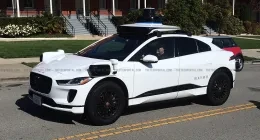Artificial Intelligence is shaking things up in the cybersecurity space, bringing both exciting opportunities and serious challenges. As cyber threats become more sophisticated, businesses are turning to AI for help. But while this tech can be a game changer for defense, it also opens the door for new types of attacks. Let’s take a closer look at how AI is transforming cybersecurity—both positively and negatively.
Real-Time Threat Detection
First off, let’s talk about the good stuff.
AI is proving to be a powerful ally in the fight against cybercrime. It can analyze massive amounts of data in real time to spot unusual activity that might indicate a security threat. For example, machine learning algorithms can monitor user behavior and flag any odd actions—like someone accessing sensitive files they don’t usually touch. This kind of proactive monitoring allows companies to jump on potential breaches before they escalate into full-blown disasters.
Many organizations are also turning to a virtual ciso to enhance their security posture, leveraging expert guidance without the overhead of hiring a full-time executive.
Automation of Security Tasks
Another huge plus is automation. AI can take over repetitive tasks like monitoring network traffic and sifting through alerts. This not only speeds things up but also cuts down on human error. By letting AI handle the mundane stuff, cybersecurity teams can focus on more complex issues that require a human touch.
Smarter Malware Detection
Traditional methods of malware detection are becoming less effective against today’s advanced threats. AI steps in here too, analyzing email content and context to differentiate between legitimate messages and phishing attempts. Some systems have achieved detection rates as high as 92%, which is a significant improvement over older technologies.
Adaptive Defense Systems
AI doesn’t just react; it learns and adapts. Adaptive defense systems use AI to continuously update their security measures based on new data. This means they can identify vulnerabilities before hackers even have a chance to exploit them. Imagine having a system that patches itself automatically as soon as it detects a weakness—that’s the future we’re looking at!
AI-Driven Attacks
Now, let’s flip the coin and consider some of the challenges that come with using AI in cybersecurity.
Unfortunately, cybercriminals are catching on to the benefits of AI too. They’re using it to automate their attacks, making them faster and more efficient. This means organizations have to stay one step ahead not just of traditional threats but also of attacks that leverage AI capabilities.
Data Quality Matters
The effectiveness of AI hinges on the quality of data used for training algorithms. If the data is biased or flawed, it can lead to inaccurate threat detection. Companies need to ensure their AI models are trained on high-quality datasets to avoid these pitfalls.
Ethical Considerations
As we look ahead, we also need to think about ethics. The use of AI for surveillance or intrusive monitoring raises important questions about privacy and civil liberties. As companies lean more heavily on these technologies, there’s a risk that they may become too reliant on them, overlooking the important human element in cybersecurity.





